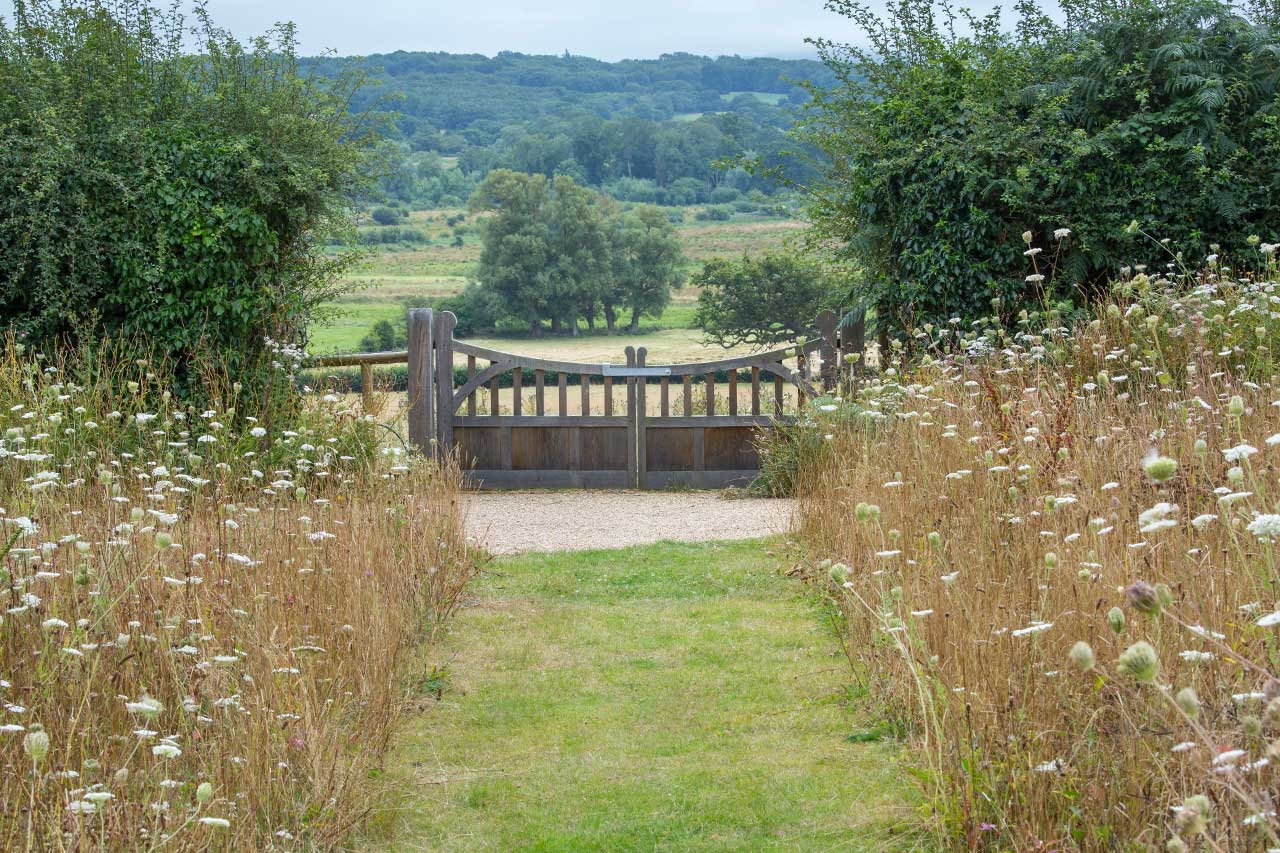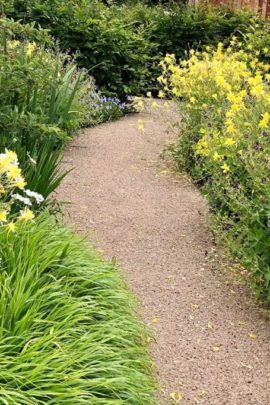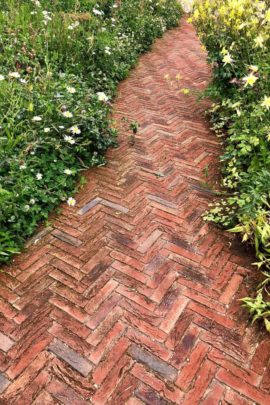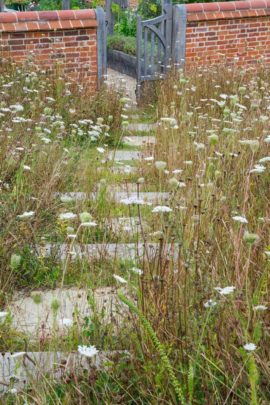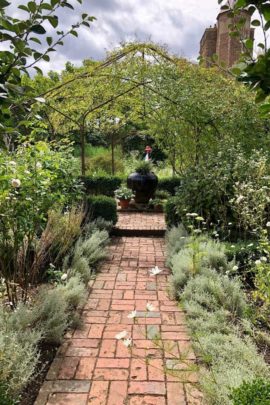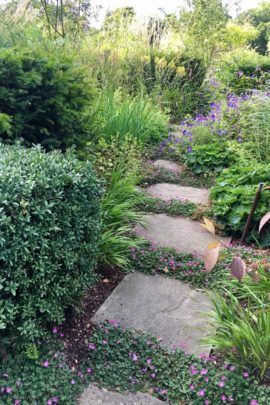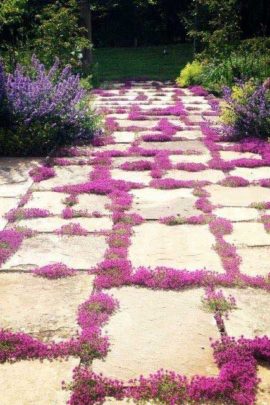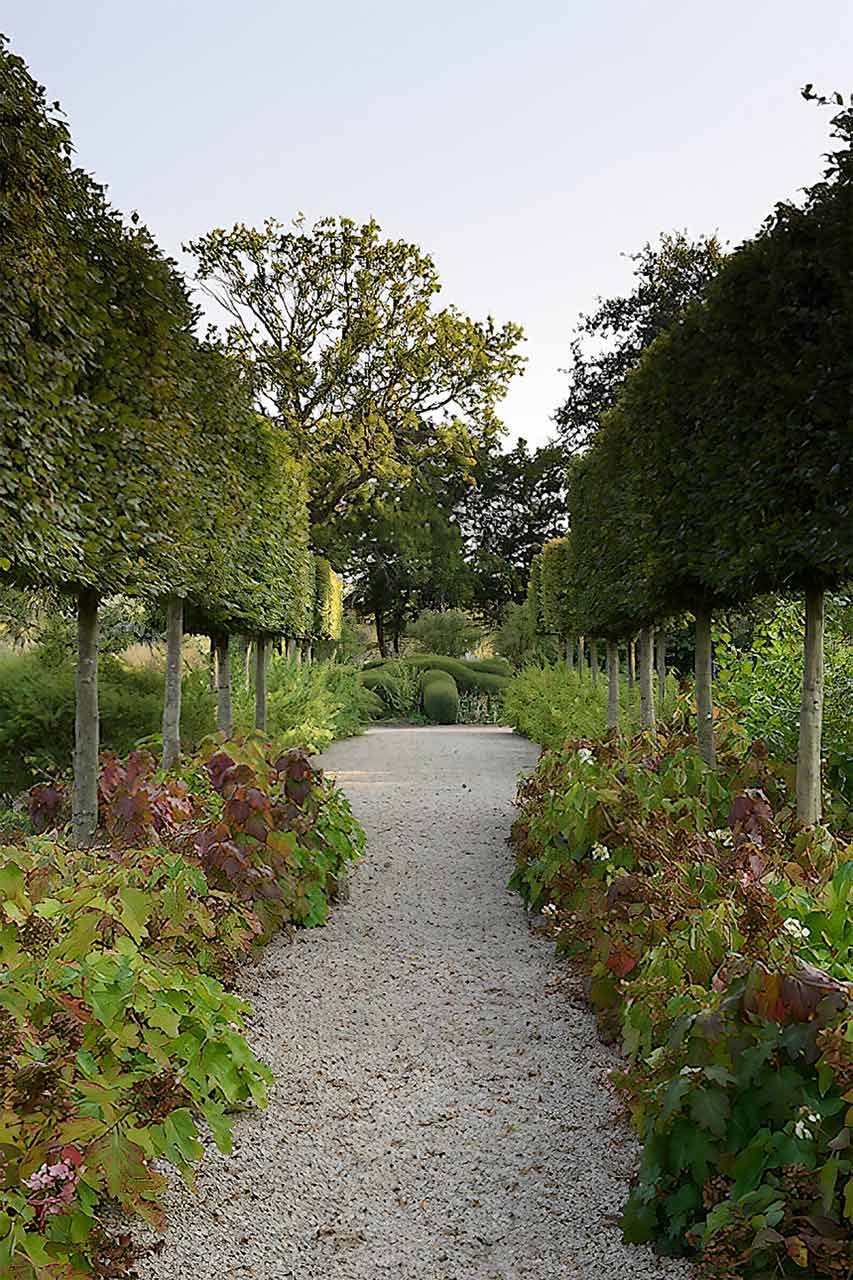Leading The Way – How To Design Paths That Please
Paths, or “garden walks”, as Thomas Mawson, the 19th century master of practical design, more graciously calls them, provide the narrative plot for a garden. They lead you from one episode to another safely, perhaps expediently or perhaps gradually, but hopefully dry shod and without slipping up on the details.
Those are the main aims and yet, like all garden details, paths can either be a hurried and ugly thing of necessity or a episode of pleasure in themselves, a source of beauty and a calm ordering presence guiding you safely and harmoniously between more exciting elements.
Period style and scale
As an extension to the house the paths should follow the house style and lead in terms of scale, period and grandeur. The scale will depend on the size of the house and garden, and the part of the garden, whether close to the house or towards the perimeter. This will dictate the entrances the path is linking and their use, and in turn the size of path itself.
A three metre path might be appropriate for the main entrance or to get around Versailles, but without a crinoline a 1.2 metre path is a comfortable width for two people to walk side by side. The original narrow brick paths of Sissinghurst work well for a private garden but were stretched when it opened to the public, and anyone who has squeezed past another visitor’s tummy at the top of Dixter will realise it was designed to fit the comfortable proportions of Lutyens’ house, and not as a popular public garden.
So the paths should sit well with the scale of the house and garden, and whilst the entrance to a grand house or important building should be commensurately wide, a double brick wheel track may be quite enough to get a wheelbarrow through a cottage garden to the vegetable potager.
The period style of the gardens will dictate the paths as well. A Renaissance garden will command straight paths on vista-creating axes, whereas a Brownian landscape will be all about the wiggle, or serpentine path curving with the contours of the landscape.
Natural materials
Exterior materials should be in keeping with the material of the region and of the house. Local natural materials will always look most in keeping and need not cost a fortune. In the right place there is nothing more beautiful than a mown path through wildflower meadow. That that will not keep your feet dry on the way to feed the chickens though, but where appropriate stepping stones through planting or wildflower will keep feet dry and reduce the initial outlay considerably.
Stone
I have visited many period country houses where the inside flooring is beautiful but the outside is less in keeping with stone imported from India. If reclaimed york stone is out of budget there are still suppliers such as Rand and Asquith, Johnsons Wellfield and others who produce beautiful newly quarried stone which ages well, or gravel is a cost effective option.
New york stone is available in different finishes depending on the look and use required: riven stone has an uneven shattered looking surface where it has been broken out of the stone bed in naturally occurring layers. A sawn finish will give a smoother and more even look and if it is then shot blasted (called shot sawn) will have a bit more texture and added non slip properties.
That said it is important to note that all natural stone will become slippery under trees or in damp corners where algae will try to colonise the surface, and the best remedy is to pressure wash or scrub it if you are tidy or safety minded. Stone varies in hardness with granite being one of the harder on the market, making granite setts ideal for a trim between path and driveway where vehicles may pass over it.
Brick
If your house includes brick then brick or clay pavers are a beautiful choice and can be laid in a variety of patterns from basket weave to herringbone as shown below. The clay brick or paver used for a path needs to be harder than a house brick to stop it taking in water and shattering when the water freezes then thaws in winter.
Reclaimed pavers are beautiful but difficult to source, and new hand made ones are available from companies like Lambs and Vande Moortel. Being hand made the pavers are different shades and darker where they have been harder baked. It is therefore wise to mix packs to get an even spread of colours over the path rather than patches.
Hoggin
Hoggin or compacted clay is a lovely soft finish and I often specify Breedon Gravel to achieve this period look, or CED do a version as well. This is a crushed clay aggregate with a high proportion of fines or smaller particles which is what makes it bond together and form a hard base suitable for wheelchairs and buggies. Like stone and brick this is best laid by professionals as it needs compacting with a roller or whacker plate whilst wet.
Gravel
Gravel is a cheaper option and should not be overlooked. I recommend angular gravel which will compact better and be easier to walk on than a rounded pea shingle, helping guests to avoid that sinking feeling as they wade towards the front door.
Laying
Your landscaper must lay all of these types of paths on appropriate bedding layers to ensure that they drain, do not puddle and are long-lasting. The websites below have helpful sections on laying, and new SUDS drainage legislation means that new paving needs to be free draining to prevent flooding in cities. Joints are an important detail and if your york stone is laid on sand these can be filled with plants like thyme for a soft scented tread underfoot.
Drainage
Before laying paths the drainage should be considered and paths should be laid to falls away from the house and two brick courses below the damp proof course (see Listed Heritage Issue 119 on Drainage)
Mowing strips
Finally, when laying paths beside a lawn or a flower bed consider leaving a mowing strip to allow the wheel of the mower to run along without falling onto the lawn or chopping up the border edge plants.
Planning permissions
The formation of a hard surfaced area within the curtilage of a Listed Building or within a Conservation Area (this includes hardstanding areas for paths, driveways, parking, patios, bin stores etc.) will require listed buildings consent. Consent is also required for a change in material to resurface an existing hardstanding area.
FREQUENTLY ASKED QUESTIONS
Which surface is best for access with a wheelchair?
A solid surface is easiest for any wheeled access and so with the exception of the stepping stones and the large format gravel most of those we have discussed would work.That said York stone can be uneven, and we have found that one of the best surfaces is Breedon Gravel, as it laid to be a solid non slip surface.
I have found York stone to be slippery, how can I remedy that?
Any natural stone will become a host to algae in damp conditions, and so shady corners are a particularly hazardous area. A good jet wash will clean the algae off and so remove slipperiness.When choosing stone or brick you can source one with a slightly rough texture which will help, however if this is a deciding factor, gravel is a better choice than stone or brick.
This article first appeared in Listed Heritage, the magazine for the Listed Property Owners’s Club.
Categories
